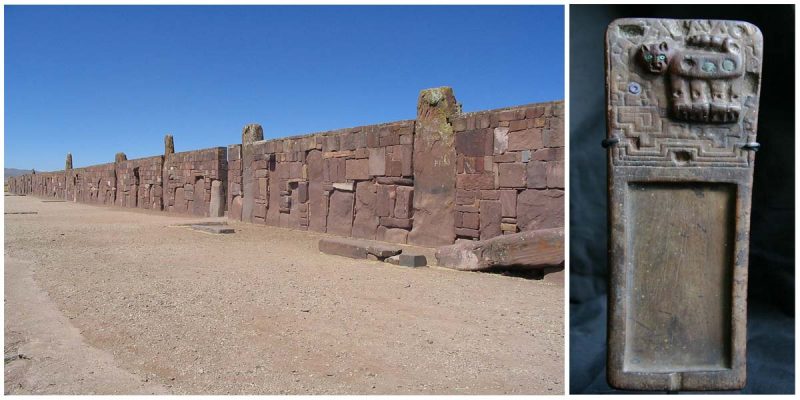Tiwanaku or Tiahuanacu is a Pre-Columbian archaeological site in western Bolivia.
The Spanish conquistador Pedro Cieza de Leon was the first who recorded the site in written history.
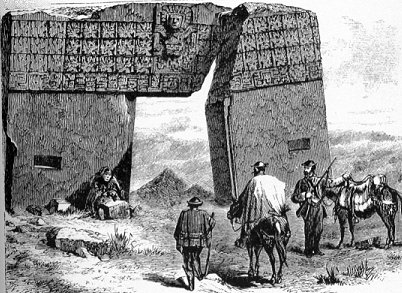
During the time period between 300 BC and 300 AD, Tiwanaku was thought to have been a moral and cosmological center for the Tiwanaku Empire.
Historians believe that it achieved this standing prior to expanding its powerful empire.
Based on Arthur Posansky’s archaeological techniques it is estimated that Tiwanaku dated to 15, 000 BC but this claim was rejected by experts in the 21st century.
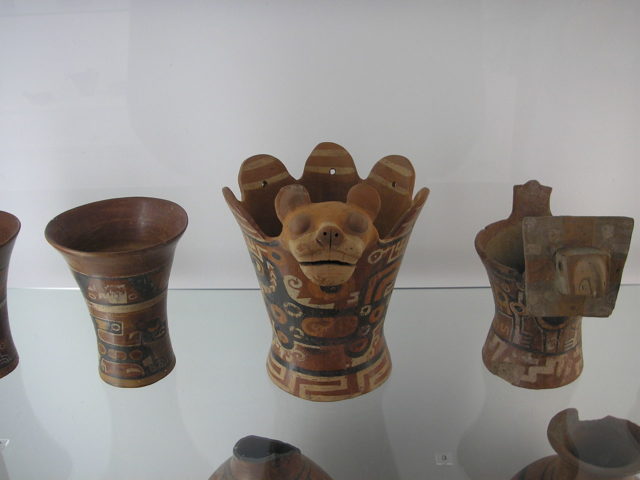
The many structures that have been excavated at Tiwanaku include the Akapana, Akapana East, and Pumapunku stepped platforms, the Kalasasaya, the Kheri Kala, and Pultuni Enclosures, and the Semi-Subterranean Temple.
Perhaps the most outstanding structure at Tiwanaku is the Akapana pyramid that is 257m wide, 197 m broad at its maximum, and 16.5 m tall.
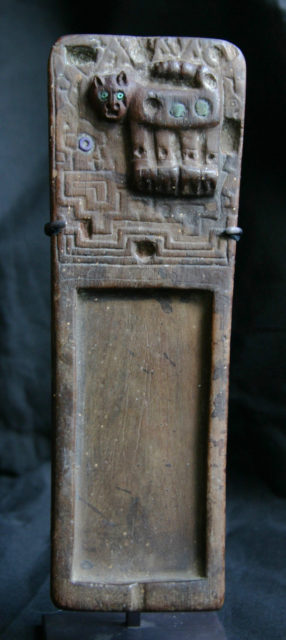
In its center appears to have been a sunken court. The pyramid was nearly destroyed by a deep looters excavation. A lot of the pyramid’s stones were looted for building local homes and churches.
Today, a staircase with sculptures is present on its western site and the latest studies have shown that it is a man-made earthen mound, faced with a mixture of large and small stone blocks.
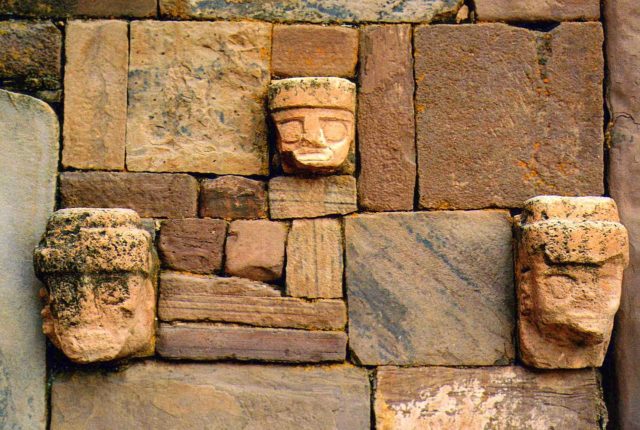
Made of sand and clay, the Akapana East was considered to be a boundary between the ceremonial center and the urban area.
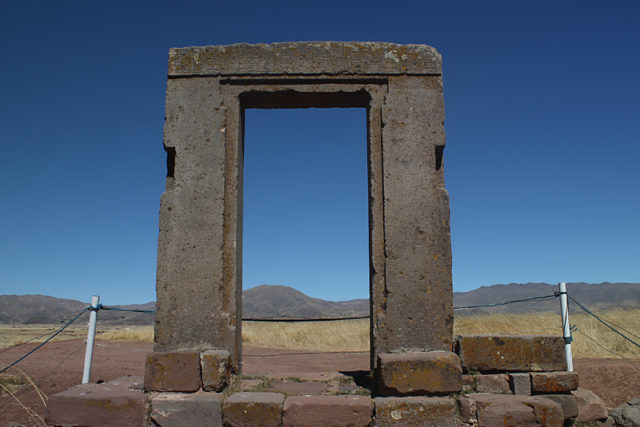
The Pumapunku is located south of the main site across the railroad tracks and it is a rectangular terraced earthen mound faced with megalithic blocks.
The Pumapunku complex contains the largest stone block found in Tiwanaku Site. Some of the megaliths weight more than 131 metric tons.
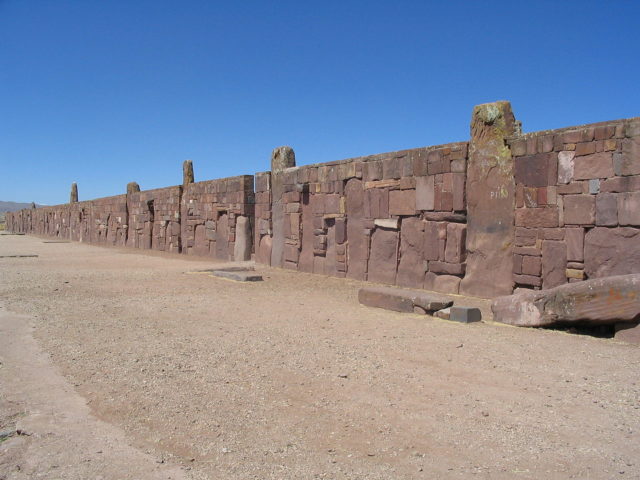
The Kalasasaya courtyard is located to the north of the Akapana and west of the Semi-Subterranean Temple.
The walls of this structure are covered with tenon heads of many different styles, suggesting that the structure was reused for different purposes over time.
The largest stone in the Kalasasaya weigh 26.95 metric tons.
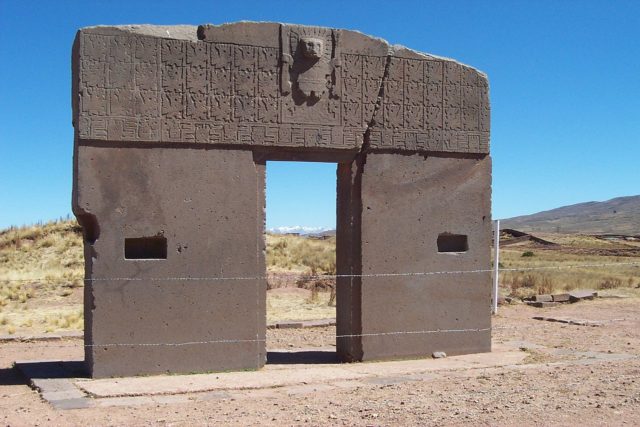
Many of the site’s structures have gateways within them -the best known is the Gateway of the Sun located in Pumapunku.
Many gateways show iconography of “Staffed Gods.”
Today, the Tiwanaku site has been administered by the Bolivian government and it has been designated as a UNESCO World Heritage Site.
